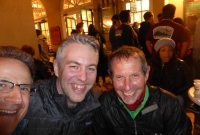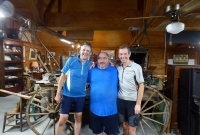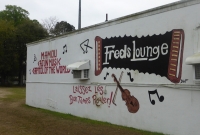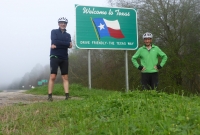It says something about the variety of long distance cycling that yesterday we were staying in the Marriott Hotel just a stone’s throw from Bourbon St and tonight we are in a rather low rent rv park eating our dinner of noodles and beans in the launderette and toilet block because it’s freezing outside. On the wall next to us is a gallery identifying all the current sex offenders in town – and giving their addresses. Nice.
There are notices all over the place which concentrate far more on what you shouldn’t do at the Maxey Care RV park than any concept that you might actually enjoy your stay here:
‘Do not wash pet clothes or bedding. Absolutely no drug activity of any kind in the park’.
‘You must clean up after yourself in the shower! No one wants to pick up your globs of hair. If you walk in and find hair in the shower please notify management so that we can identify who was in there before you!’
Would we be strip searched before we left in the morning to identify if a stray follicile had escaped from somewhere on our body? How would they know it was ours? Was the reason the RV site was so crappy because all the money had been spent on DNA testing?
Fortunately one of the visitors had a sense of humour and had added: “But what if you have been framed?” Who was using the showers at Maxey’s – a Yeti?
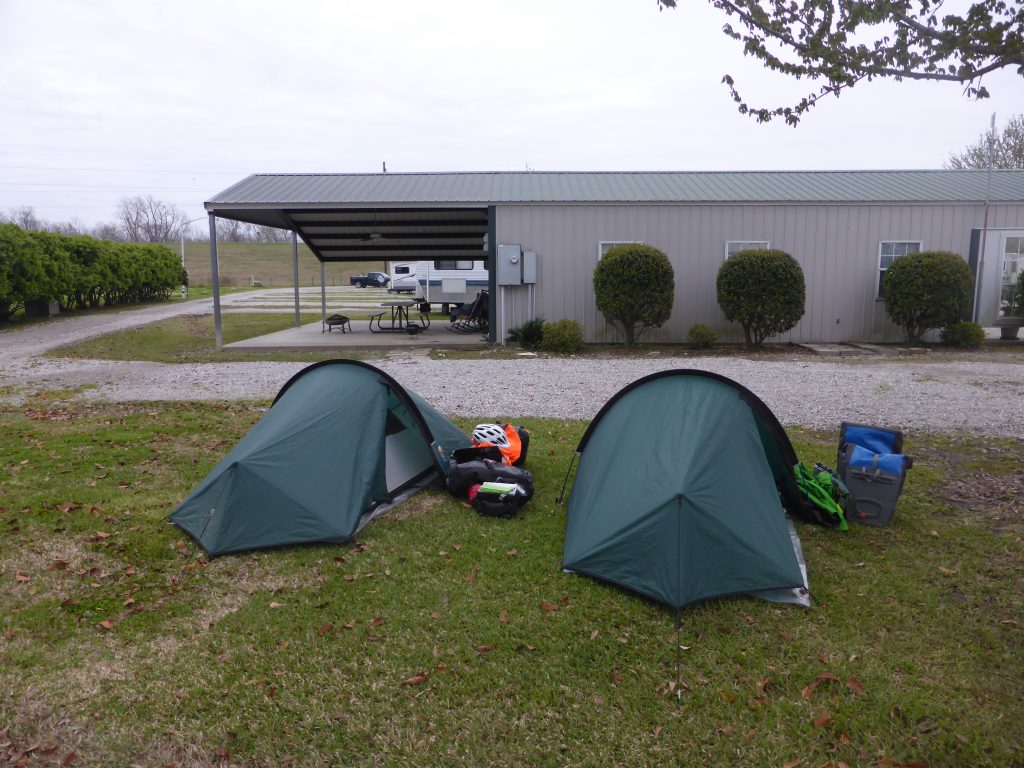
Our day began not on the bikes, but in a giant Chevvy Tahou. We had been falling behind on the ride since the start and had spent each day worrying a little more about our schedule. The solution, said Mike, was simple. He’d hire a car and drive us out of New Orleans as far as he could before heading back to the city to catch his return flight home to Chicago. It would knock about 70 miles off the route and would buy us a day back.
It should have been a straightforward decision and for Terry it was. We were off schedule and Mike was giving us a golden opportunity to catch up, which we wouldn’t get again. Besides which we’d cycled into New Orleans which had been off route and added extra miles anyway. It was a no-brainer. But of course, as on the TransAm, my mind started cart-wheeling about whether this would ruin the ‘purity’ of the ride. Could we hold our heads up and say we’d ridden the Southern Tier if even a small part of it had been in a Chevvy?
“I rang Kate who confirmed I was being stupid and got in the truck”.
I’d faced a similar conflict when we were stopped by forest fires while riding the TransAm in Oregon five years earlier. It took me a day before I realised the only way we were going to complete the ride was to jump in the back of a fire truck for a few miles. Mike hadn’t hung around – as soon as he’s seen the situation he adapted and took the first lift he was offered while we spent a day twiddling our thumbs in the heat.
Mike explained the difference between us was that his TransAm challenge was never about if he could pedal the 4300 miles from coast to coast, but whether he could leave his preconceived notions behind and adapt – “putting yourself at the serendipity of what can happen”.
He was right of course, as was Terry, who felt that the figures alone showed it was the right decision. The problem was me and the battle going on in my head. A long distance ride should be about the experiences you have on route, the people you meet, the unplanned events that make it unique. That didn’t always mean cycling every single mile – unless of course you were taking part in a race. The experience of riding in a truck through blazing forest fires in Oregon was one I’d never forget – if we hadn’t taken that decision we’d never have reached the Pacific.
I rang Kate who confirmed I was being stupid and got in the truck. Terry had made it quite clear he was going with Mike anyway and I didn’t blame him. I was the problem. In my mind I told myself that as long as I’d cycled at least 3041.9 miles by the time we reached San Diego (the official length of the Southern Tier) I’d be happy. But I vowed that for future rides I’d try and follow Terry and Mike’s attitude – the ride is all about the experience, not being a slave to your cycle computer. It was a good lesson to learn and not before time.
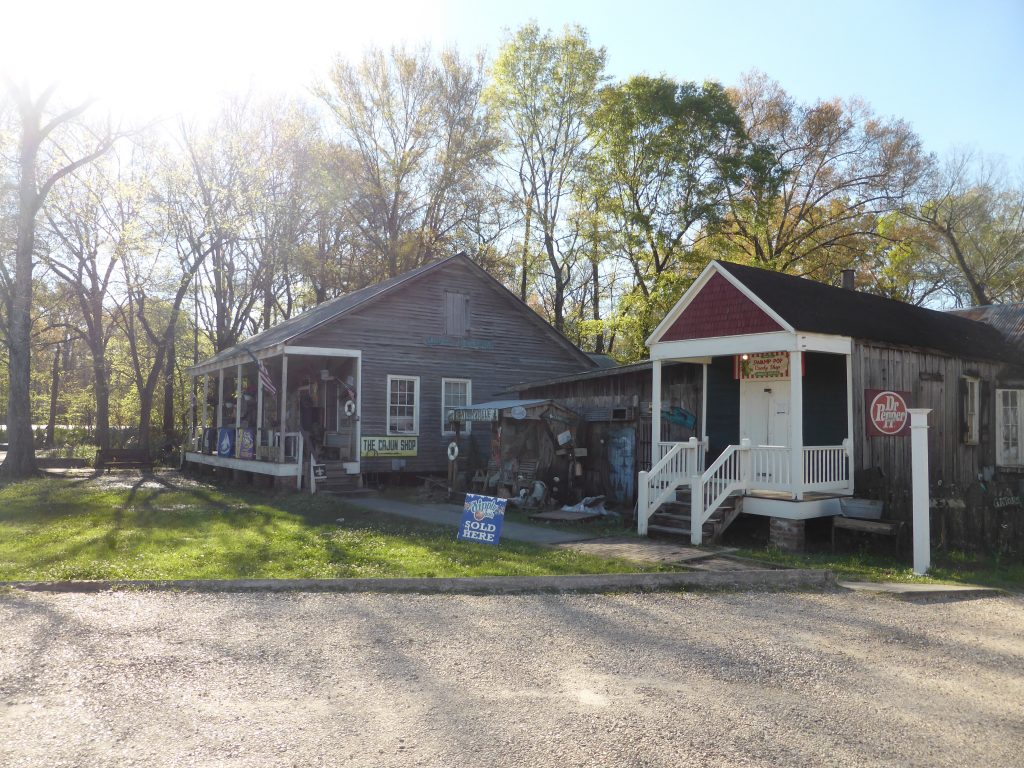
We pulled off for breakfast at the Cajun Village in Sorrento, a collection of wooden buildings which looked like they had been there for more than a century, although we later learned they were made up of historic buildings from the surrounding area which had been saved and moved to one location. They now sold everything from pottery and antiques to coffee.
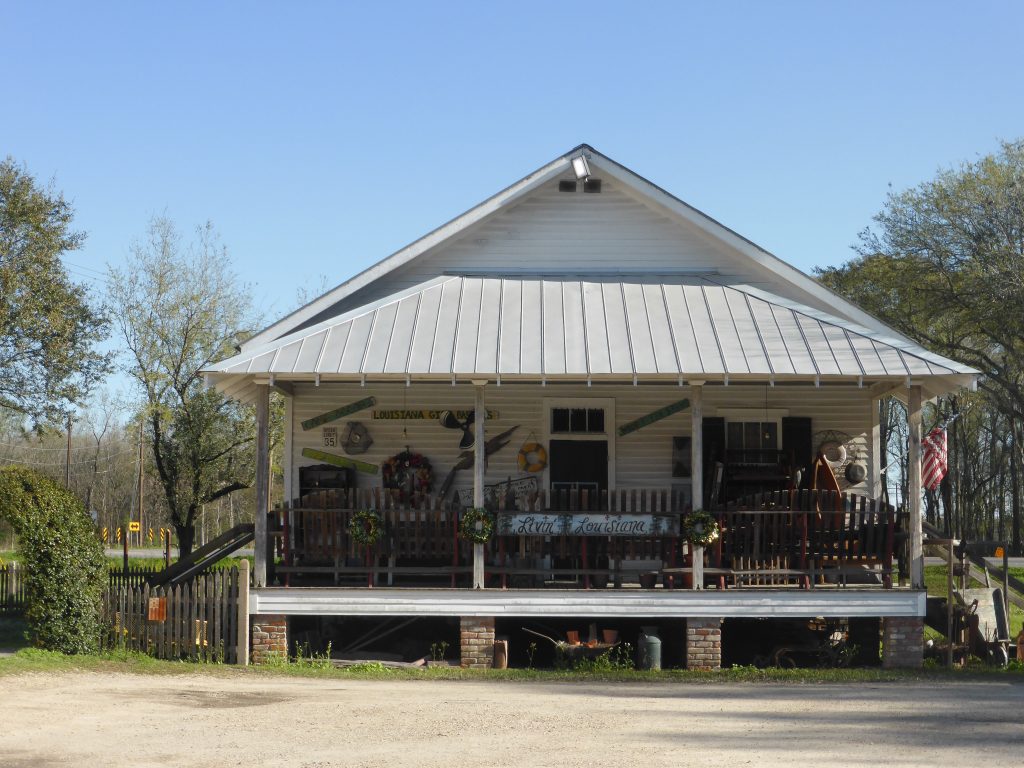
Refreshed, Mike pushed on in the Tahou buying us as many miles as possible before he had to turn and go back to the Louis Armstrong New Orleans International Airport. Mike and I had cycled there the day before to pick up the truck – a simple ride following the long meandering levee of the Mississippi for about 17 miles and then approaching the airport from the south.

We said our goodbyes to Mike at St Gabriel in Iverville Parish and popped into the Grocery and Deli, one of the oldest opertating stories in Louisiana. It has stood there since the 1820s and has had only three owners in all that time. Incredible.
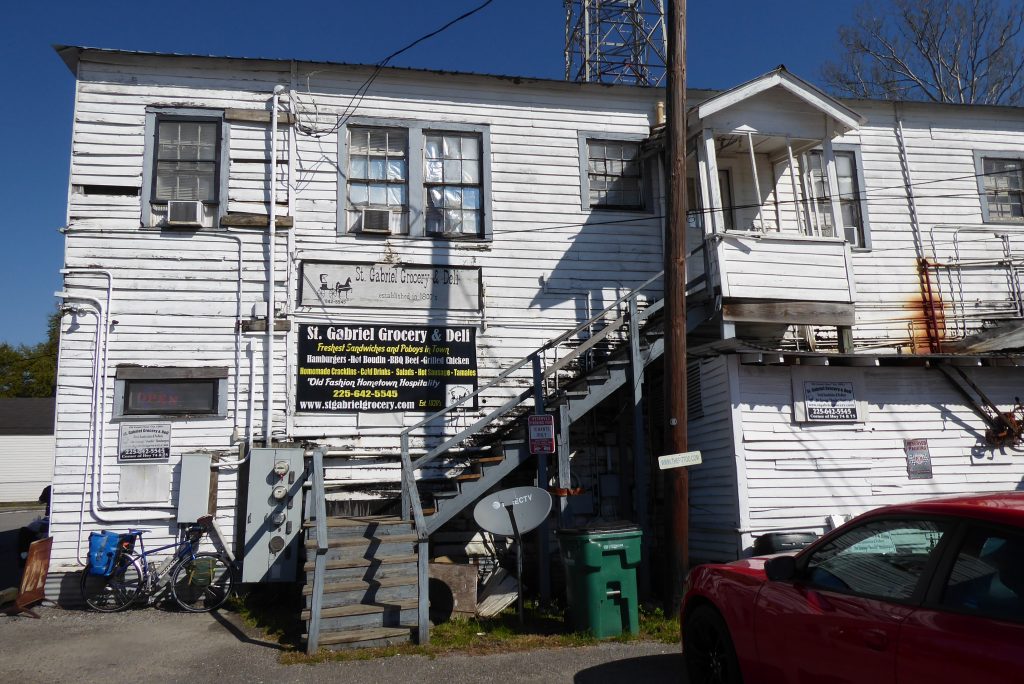
Inside it was a time capsule of the sort you come across every now and again on the US backroads. The products being sold may have changed (I doubt they were offering 2 for 1 Daiquiris in 1820!) but the shelves, decor and cash till appeared to have remained static. Out back there was even a small area which once appeared to have been the local post office. How its weathered boarded structure had survived the various natural disasters that roll up in Louisiana uninvited almost every year was nothing short of a miracle.
“No-one knows when the next Hurricane Katrina will make landfall, or whether the defences, strengthened since 2005 will hold”.
We are now back on the ACA maps, working our way up the New Orleans Spur which approaches the city from the west. Restocked with emergency food, water bottles filled, longs trousers on (it’s still cold!), tyres pumped … riders definitely not … we headed off following the rail line into Baton Rouge.
At one point, for far too short a distance, we hop onto the cycle path atop the levee and are able to see how high the Mississippi is compared to the road below us. When you realise what a huge volume of water is being held back it really makes you realise how vulnerable the entire New Orleans delta remains. No-one knows when the next Hurricane Katrina will make landfall, or whether the defences, strengthened since 2005 will hold.
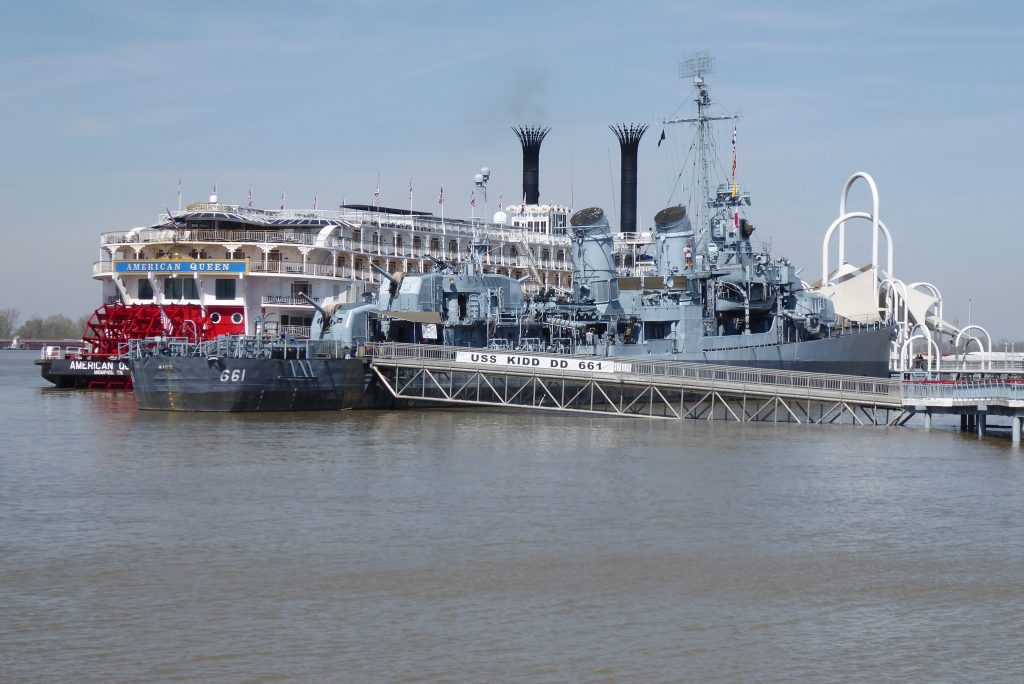
We pass the USS Kidd, a Fletcher class destroyer, which has done its job protecting the US, first during the war in the Pacific during WW2 and then the Korean War. It now spends its days as a museum ship. Alongside the historic vessel was the paddle steamer American Queen, said to be the largest steamboat ever built. But despite her looks she’s more than half a century younger than Kidd, built in 1995, although her paddle is still steam-driven.
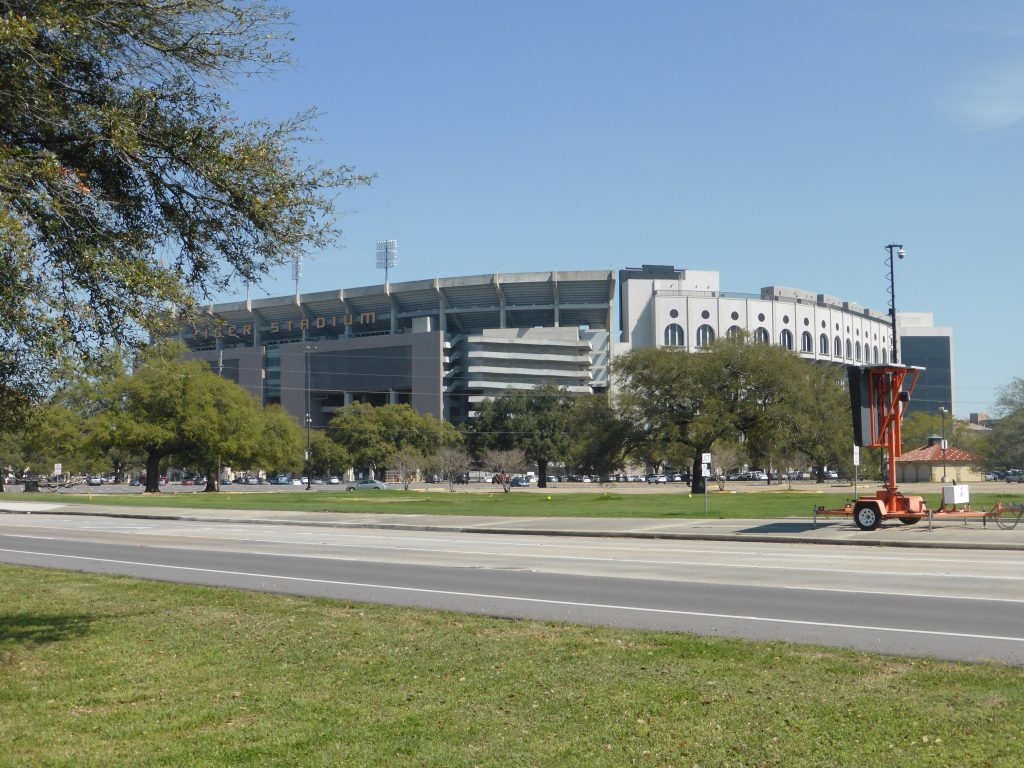
What we saw of Baton Rouge was new, clean and oddly devoid of people. It was impressive, but far too quiet and there’s a real feeling here we were cycling through the day after the night before. Mardi Gras in Louisiana is definitely over. Only the churches, celebrating Ash Wednesday, seem to be doing good business. Shortly after leaving the centre of town we spot two words on the ACA maps that fill us with horror – Scenic Highway. We’ve learnt from experience that scenic does not mean what it says, with the nightmare highway into Pensacola being the worst example.

Perhaps this would be different. It wasn’t. The 24 mile stretch of the 61 between Baton Rouge and the turn off to the 10 is one of the most horrible stretches of road we’d encountered. A shoulder littered with debris, including twists of metal and four lanes of traffic thundering past so fast you can hardly hear yourself think. And those scenic views – just wow!
“The Southern Tier just kept delivering a series of truly awful roads where all you can do is grind out the miles”.
Once upon a time you may well have been able to see the Mississippi, but now all that’s visible is mile upon mile of the Exxon Mobile refinery and endless storage tanks. Throw in miles of boarded up derelict shacks and failed businesses and you get the picture. We looked on each other with despair – the Southern Tier just kept delivering a series of truly awful roads where all you can do is grind out the miles.

We stopped for lunch – peanuts, biscuits and trail mix – at the entrance to the Port Hudson State Historic site where the last Confederate stronghold on the Mississippi River held for 48 days while under siege from Union forces which had already taken New Orleans. It was also the site of one of the earliest uses of African American troops in combat.

Refreshed, we enjoyed the scenery for a few more miles before turning onto the 10 where the traffic lightened and the views improved dramatically. Just before New Roads we crossed the Mississippi floodplain on a vast bridge passing acre on acre of flooded trees.According to the notes on the Adventure Cycling maps, were it not for the levees, one third of the total area of Louisiana would look like this, being frequently flooded by the mighty Mississippi.
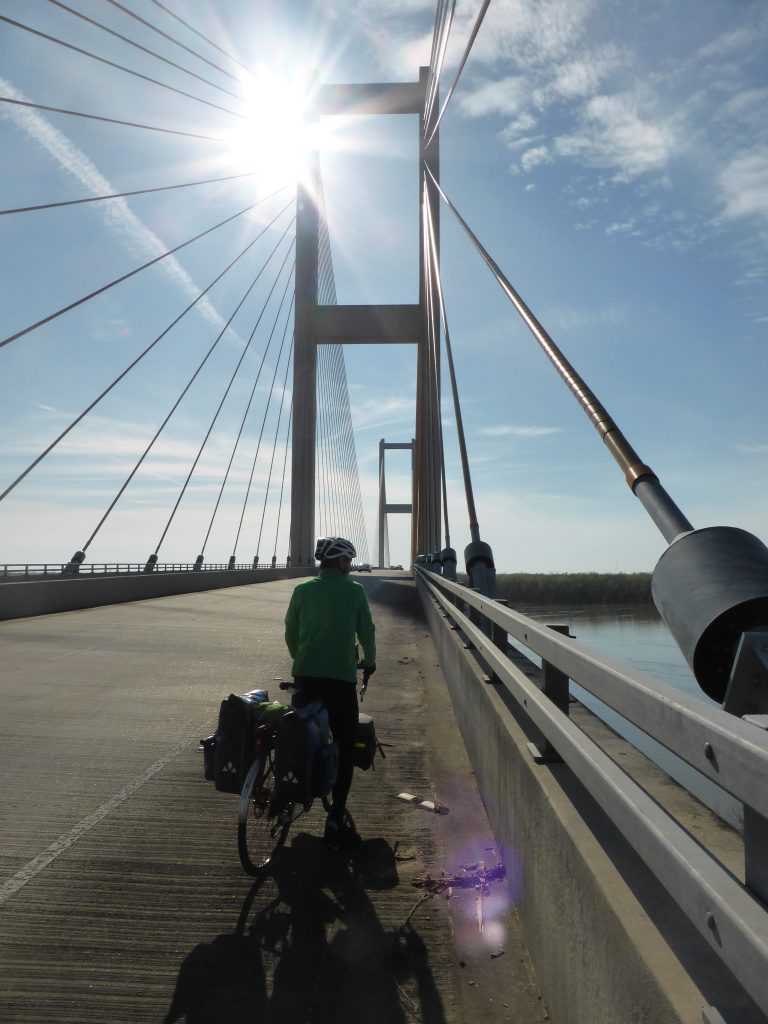
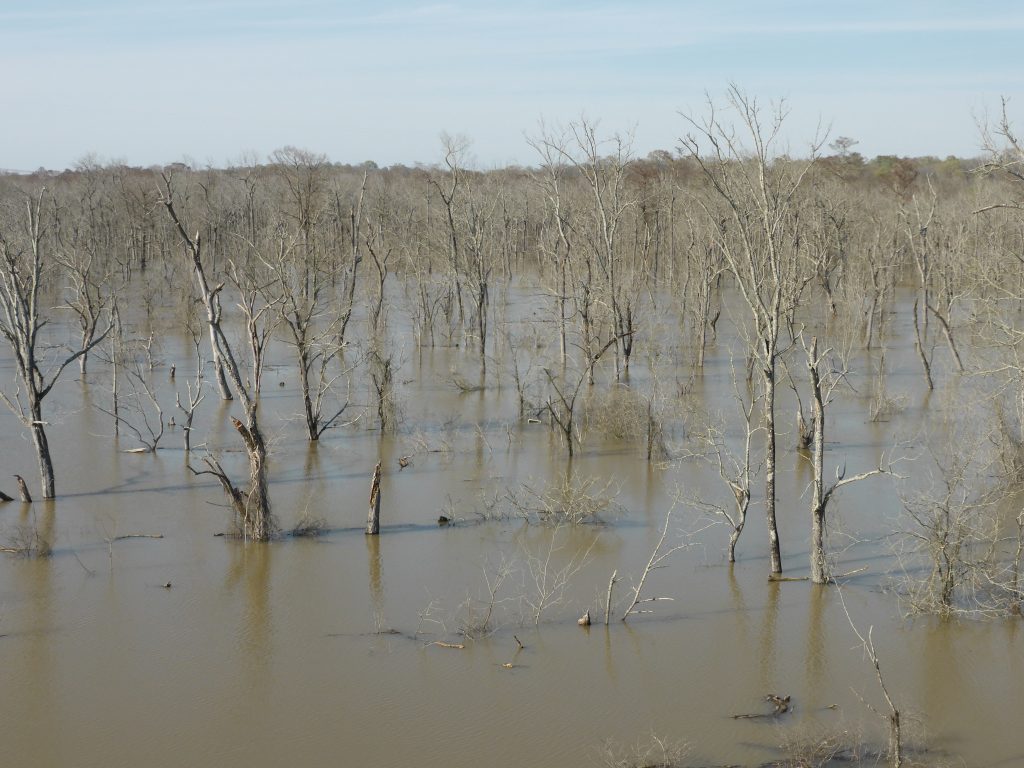
After crossing the Mississippi the landscape became noticeably greener. Trees had sprouted the first buds of Spring, there were fields filled with crops, birds drifted across the sky and yellow flowers hugged the roadside. The golden last hour of sunshine painted the scene in soft pastel colours – it was just the kind of road that we’d experienced on the TransAm – could the Southern Tier finally be ready to start? Suddenly the world was a better place.
“Beads littering the gutter were a tell take sign of the route the floats had taken”.
The outskirts of New Roads were like so many American towns we’ve cycled through – very poor housing with people living in little more than shacks surrounded by abandoned items, mainly made up of those that are expenisve to get taken away – fridges, sofas and cars. The difference here is that many of the homes had Mardi Gras floats next to them from the previous night’s parade. Beads littering the gutter were a tell take sign of the route the floats had taken.
We picked up supplies at Family Dollar – more ramen noodles. Sadly it seemed the famous Cajun cooking for which this region is famous, was passing us by, or we were just out of season.
The more well-heeled inhabitants of New Roads lived in brick built homes facing the False River – a curious geographic feature called an oxbow lake. This stretch of water had once been part of the Mississippi, but was cut off in 1722 when flooding cut a shorter channel to the east. It now flows no more, but is a popular spot for fishing, water skiing and sailing.
We arrived in Morganza just in time to get the tents up at the Maxey Care RV park. $30 buys you a pitch for two small tents, access to a laundromat and a shelter with security lighting that was movement sensitive, but seemed to flash on and off for no apparent reason. Working in darkness, then light, the darkness again, Terry experimented on our staple diet of ramen noodles and added red chilli beans. It was a triumph – or maybe I was just deliriously hungry! We ate our dinner sitting on lounge chairs in the laundromat and topped it off with pots of custard and peaches.
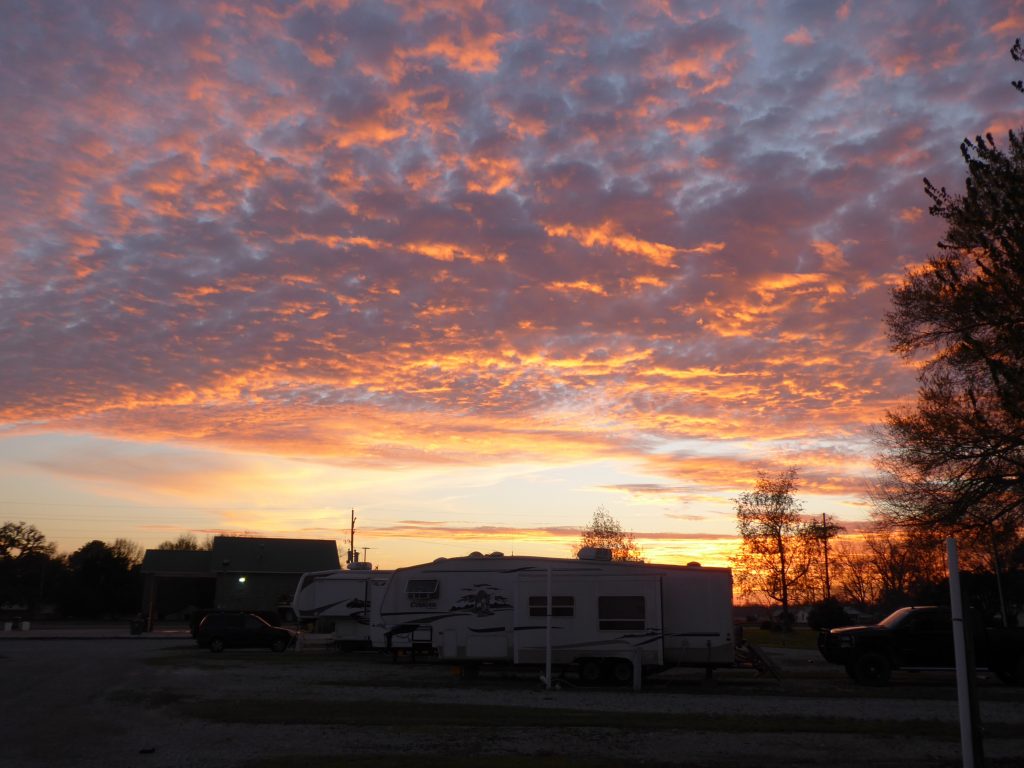
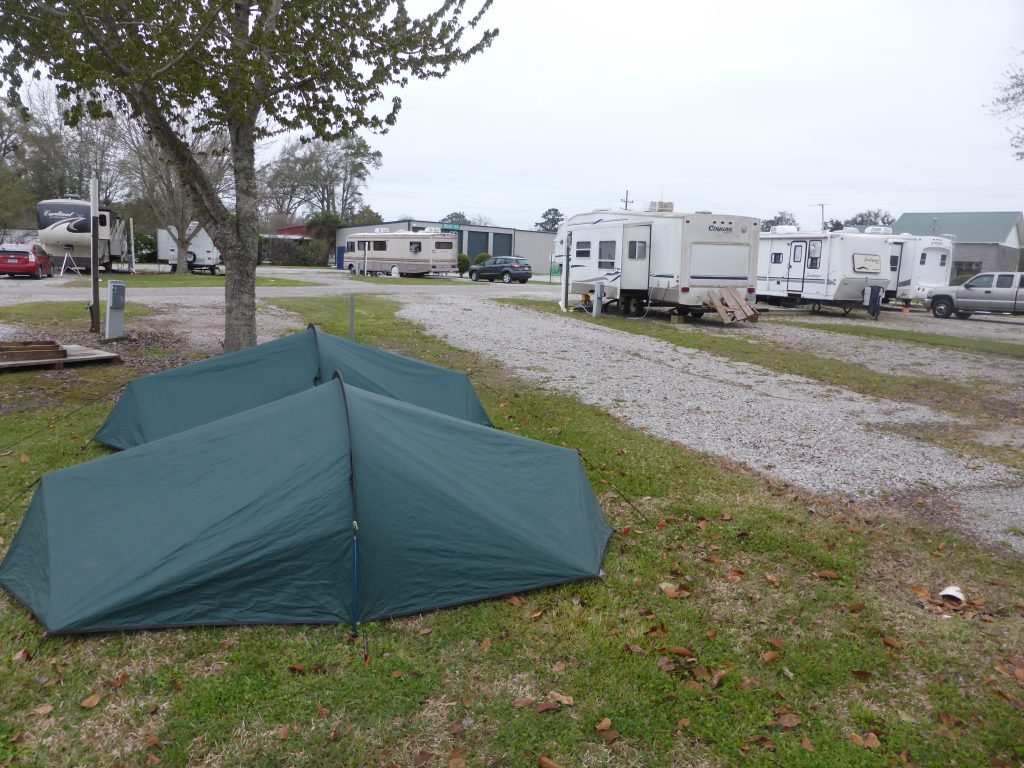
Truth was were trying to do everything we could to avoid leaving the warm laundromat and going into our tents. The temperature had fallen to three degrees and we buried ourselves in our sleeping bags, still dressed in our cycling clothes and wrapped in fleeces and buffs. Outside, just a few yards from our tents, a towering wall of mud held back the mighty waters of the Mississippi and we lay there shivering and praying it – and us – would still be there in the morning.
Today’s miles: 63.87
Total distance miles since Anastasia State Park 803.47


